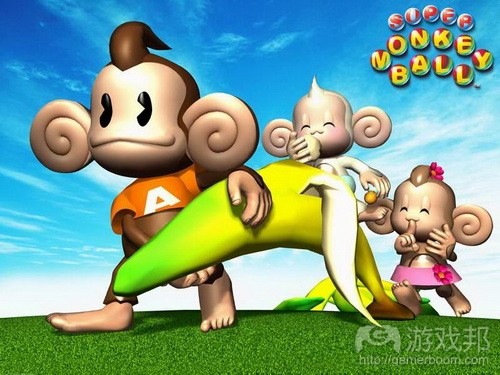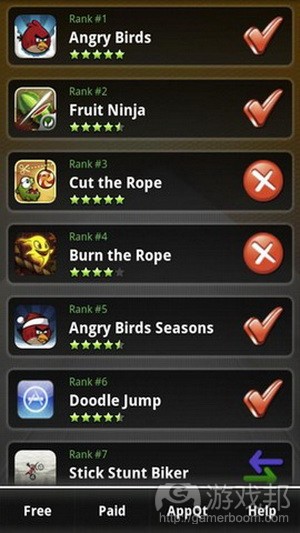开发者称提高应用价格才是未来盈利出路
作者:Andy Finnell
常有人建议我以故事形式开始作文章。下面就请容我以一段蹩脚故事切入主题。
小提米的故事:
小提米是BigCoSoft公司的开发人员,但他梦想有天能够创办自己的公司,制作自己的游戏。iPhone SDK问世后,他腾出所有业余时间,几个月里全心投入制作新款iPhone应用。
到定价阶段,他决定以最低价即99美分出售作品,因为其他人一贯采用该模式,他决定依靠销量获得竞争筹码。而且曾有个12岁男孩向他抱怨说游戏不是免费应用,他不想让其他人感到沮丧。
不幸的是,小提米无法靠4000美元年收入存活,所以他离开人世。BigCoSoft用自己的火炉把小提米火葬,这样他们就能够省下14.67美元费用。
故事结束。
我发现我的部分读者是工程师,他们偏好事实论证。所以下面我们就来看看相关数学问题:
问题 1:假设小提米能够靠5万美元年收入谋生(游戏邦注:税前,这意味着提米就不是住在加里福利亚、纽约之类的城市,而是而是偏远的爱荷华乡村地区)。提米需出售多少份游戏才能够维持生计?
答案:由于提米产品的价位是99美分,苹果分成30%。提米只能从中获得70美分/份。那么他每年就得售出7万1428份,每天得售出196份。
问题 2:作品发行后提米每天有望售出多少份?
答案:16份。
问题 3:小提米是不是你听过最傻的人?
答案:哈哈,是的!
姑且跳过小提米部分,让我们来谈谈如何定价方能避免失败。
存在问题
和多数开发商一样,你都会面临合理定价问题。其中陷阱是你常会定价过低,难以维持产品运作。你或许是出于美好设想,但这只会导致产品尚未获得展露机会便早早夭折。
所以究竟是什么促使你低价定位呢?
原因 1:商店最初价格
很多人都会参考苹果WWDC大会的情况设定应用价格。其中售价9.99美元的世嘉《Super Monkey Ball》获得最多关注。在App Store问世期间推出应用的开发者都以《Super Monkey Ball》作为参照进行定价。不幸的是,很多开发商都觉得他们需击败世嘉提供的价位。
事实是:与世嘉进行价格战是个错误之举。它是实力雄厚的大公司,在低价竞争中,他们显然略胜一筹。他们无需依靠iPhone游戏创收,他们有很多其他作品。相反,你需靠此作品创收,而且还要确保收益能够维持生计。
原因 2:用户期望
世嘉最初定价,以及随后大量跟风者定价模式都使用户对iPhone应用价格形成一个预期标准。后来进入该领域的开发者不得不效仿先例。这个趋势在调查机构进行的“用户调查”当中显露无遗,其中“潜在用户”表示他们能够接受的iPhone价格在5美元之内,虽然他们并不明白“贪婪”开发商为何想要从中获取更多。毕竟他们能够靠数量维持收入水平。
遗憾的是,用户期望的降低正是开发商所致。开发商最初设定的价格形成所谓的用户期望。降低用户期望值其实是在欺骗用户。你仿佛在说,“我凭这个价格就能维持应用发展”,而其实并不能。这是不诚实的表现,最终会置项目于死地。
原因 3:商店竞争
开发商低价定位的最大原因在于App Store竞争机制。应用根据销量排名。地球人都知道价格越低,销量就越多。排名前100应用其销量都非常庞大(游戏邦注:而榜单之外的应用都默默淡出大众视线)。所以为获得更多曝光度,开发商就尽可能低价定位商品。
问题是这个方案只适用于前100款应用。大家都受欺骗。除非你的应用能够跻身100款应用之列,否则降低价格也是徒然。
苹果未来或许会修复这个漏洞。他们也想赚钱。苹果从中只获得30美分/份,这需要应付宽频费、交易费和广告费。我不是说苹果无法从99美分产品当中获利,而是说他们其实更愿意出售9.99美元作品。
原因 4:瞄准短期发展
App Store是个年轻平台,很多原始开发商凭借大肆宣传和高度曝光获得可观收入。这是在平台先驱们的意料之中,问题是很多投身iPhone应用市场的开发商认为自己也能够复制此成功,认为自己只消推出应用,就能获得丰厚营收。
此处问题是开发商因此变得只关注营收,而不再培养长期用户基础。他们低价定位商品,换得如今的大规模销量,但他们完全不考虑明年要如何创收。99美分应用的上限价格是多少?若是款99美分应用,你就无法树立用户忠诚度,因为你无法开展促销活动。若是款免费应用,那就糟糕至极,因为你根本无法创收。
解决方案:9.99美元取代0.99美元
定价过低的解决方案很简单:提高应用价格。把大部分99美分应用调成9.99美元,4.99美元应用提高至14.99美元。就9.99美元应用来说,你从中赚得7美元/份,售出16份/天,这样你每年就能够获得4万美元收入。这不是笔大数目,但这能够支撑开发商在乡村地区里成功制作一款iPhone应用。
毫无疑问提高价格会招来用户不满。没有人想掏更多钱。但价格调整越早越好。我们需让用户明白应用无法靠此微薄收益存活。
另一方面,谁都不想成为首个调整价格的开发商。很多人都认为若提高价格,作品将无人问津。以下是开发商存有的顾虑:
误区 1:用户无法发现我的应用!
这又回到开发者竞争机制。若开发者提高价格,其销量就会下滑,无缘前100款应用榜单。关于这个问题有两大应对方案。
首先就是苹果应进行相应调整,这样位列100款榜单之外的应用也能够很快被发现。苹果或许不会马上提供方案,但早晚会有这么一天,因为这是他们最大利益所在。到时应用价格就不再重要,所有应用都能够被用户发现。
第二个方案就给应用打广告。开发商需不断进行试验方能发现最佳广告位置和最合适关键字广告,但这些最终都将落到实处。打广告对99美分应用来说不切实际,因为若每次付费转化成本超过70美分,你就要亏本经营。换而言之,若你提高价格,就会有更多用户获悉你的应用。
误区 2:这会降低销量!
单就价格与其他应用开发商竞争最终只会导致破产。产品应有除价格之外的更多卖点(游戏邦注:或更多功能,更易于使用,或能够解决上述问题)。
当然市场中定有某些学生或业余爱好者会以更低价格出售竞争产品,他们无需靠产品维持生计,所以自然就不会想要调整价格。这在Mac市场司空见惯。若你通过提高价格,顺利靠应用谋生,那么就有充足时间完善应用。这样你就能够利用多余时间制作比低价竞争者更优质的应用。
用户愿意为上乘作品掏更多钱。遗憾的是,App Store开发商没有给予他们这样的机会。
误区 3:这是市场能够承受的价格
换而言之就是:此应用价格就是市场愿意支付水平。我不反驳这点,但我们还需考虑另一方面。
你还需考虑创建和维持应用成本。若应用创建价格高过市场接受度,那么你或许就该放弃此应用,因为这将会是失败之作。若不顾实况创建应用是欺骗用户行为,因为你其实是在出售一个会被用户抛弃的作品。
我认为,通常开发商不会知道市场接受限度,因为很少有人真的挑战此界限。目前大家都争相瞄准价格底线。App Store还处于初期阶段,所有大家还机会进行试验,看看提高价格是否真的会令应用遭殃,或者应用只是需要更多时间。
误区 4:我能够靠数量取胜!
我很惊讶竟有如此多开发商认同此观点。虽然确有开发商凭此获得丰厚收入,但这对多数应用而言并非长久之计。想通过数量平衡定价策略,你的产品就需要具有广泛吸引力。此外,潜在应用需能够发现你的应用,这表示你要在100名应用之列,让苹果在宣传栏中推荐你的作品。换句话说,这很大程度依靠运气,此胜算不大,远低于俱乐部老虎机的成功机率。
总结
App Store不能维持现状。否则会出现以下3种情况:
1. App Store成为业余爱好者和学生族群驻足的市场,这些群体能以低价出售产品,因为他们不靠此维生。这样一来,独立开发者就会淡出市场,只有BigCoSoft偶尔推出几款作品。
最终这会变成充斥废弃软件的市场,业余爱好者和学生都转投其他能够带来实际收益的项目。
2. App Store成为服务一次性应用和废弃应用的市场,这些应用不会出现衍生版本,因为作品无利可图。开发商能够以低成本轻易创建应用,凭借初期显著销售业绩创收。
商店到处充斥奄奄一息的应用,作品若无法跻身前100名应用,结果将更糟糕。最后,随着开发商逐步放弃这些简单应用构思(游戏邦注:这只会带来一次销售高峰),应用商店也荡然无存。
3. 开发商开始以更具前瞻性方式定价作品。低价定位作品的开发商最终将淡出大众视线,无法继续其开发之路。在游戏市场中,价格提高就会促使独立开发者和BigCoSoft开发更多iPhone应用。
未来将会出现iPhone应用萧条期。目前的iPhone应用价格实在难以支撑开发商持续发展,开发商或最终发现自己无法依靠当前应用价格生存,选择退出市场,或逐渐对淘金热失去兴趣,意识到自己无法依靠应用商店快速致富,选择离开。只有那些合理定价的开发商能够在市场中生存下来。
我很期待看看自己所述内容未来是否会变成现实。我目前正在制作一款iPhone应用,我将定价9.99美元,今后将同大家分享作品最终成效。
游戏邦注:原文发布于2008年11月15日,文章叙述以当时为背景。(本文为游戏邦/gamerboom.com编译,如需转载请联系:游戏邦)
How to Price Your iPhone App out of Existence
By andy
I’m always told to start a speech with a good story, so I assume you’re supposed to start a blog entry with a bad story.
The Parable of Little Timmy
Little Timmy was a developer at BigCoSoft, but he dreamed of working for himself one day with a product of his very own. When the iPhone SDK came out, he set aside all his free time and slaved over a new iPhone application for months.
When it came to pricing his software, he decided to sell it for the lowest possible price, $0.99, because that’s what everyone else was doing and besides he’d make it all up in volume, whatever that meant. Plus, he already had 12 year old boys yelling at him because the software wasn’t free, and he’d hate to upset anyone.
Unfortunately Little Timmy couldn’t live on $4,000 a year, so he died. BigCoSoft cremated his body in their furnace so they could save $14.67 on their heating bill.
The End.
I realize that some of my readers are engineers, and prefer cold hard facts. So for you my friend, some math problems:
Question 1: Assume Little Timmy could live off of $50,000/year, before taxes (Note: this means you have to assume Timmy doesn’t live in California, New York, or any big city, but in a farmer’s wheat field in some desolate corner of Iowa.) How many copies of his product would Little Timmy need to sell to eat?
Answer: Since Little Timmy only priced his software at $0.99 and Apple takes 30%, Timmy only makes about $0.70 per copy. He would need to sell 71,428 copies a year or 196 copies a day.
Question 2: How many copies a day should Timmy expect to sell, after the initial launch?
Answer: 16
Question 3: Isn’t Little Timmy just about the biggest moron you’ve ever heard of?
Answer: haha! Yes!
So now that we’ve finished mocking poor Timmy’s corpse, we should talk about how to price your application before you become firewood.
The Problem
The problem that you’re likely to have, like most developers, is setting a price that you can live on. The temptation will be to price your app too low, such that developing the application isn’t sustainable. You might have the best of intentions, but in the end you’ll cause the premature death of your business before it even gets a chance.
So why might you be tempted to price your iPhone application so low?
Reason #1: Initial store prices
A lot of people were looking at the apps announced at WWDC to see what they would be priced at. In particular Sega’s Super Monkey Ball, priced at $9.99, seemed to receive the most attention. Developers releasing around the App Store launch seemed to use Super Monkey Ball as a barometer as to how to price their app. Unfortunately, most of them seemed to think they needed to beat Sega’s price.
Here’s the thing: engaging Sega in a price war is a sure fire loss. They’re a bigger company with deep pockets and will always be able to undercut you in price. They don’t need make much, if any, profit on their iPhone game, since they have a lot of other products. You, on the other hand, need to make a profit on your iPhone app, and a big enough one to live off of.
Reason #2: Customer expectations
Sega’s initial pricing, and the subsequent following suit of just about everyone else, set customer expectations for iPhone app prices. Developers entering the market in the following months felt compelled to follow the example of the first developers. These feelings were only reinforced by just about every “customer survey” done by TUAW and other bloggers, in which potential “customers” said they wouldn’t ever pay more than $5 for an iPhone application, although they really didn’t understand why those greedy developers felt they needed to charge anything. After all, they could make it up volume.
Unfortunately the blame for setting customer expectations falls squarely on developers. Developers get to set the price, and thus the expectations. By setting the price expectations so low, you are lying to your customers. You are saying “I can sustain development of this app for this price,” when in fact, you can’t. It’s dishonest, and it will kill your business.
Reason #3: Gaming the system
By far the biggest reason why developers price their apps so low is to game the App Store. Applications are sorted by how many copies they have sold. It doesn’t take a rocket scientist to figure out that the lower the price, the more copies an app will sell. The top 100 applications sell tons of copies, while applications outside that top 100 seem to wither away unnoticed. So in order to get more exposure, developers price their applications as low as they can.
The problem is that this scheme only supports 100 applications. Everyone else is hosed. Unless you can get and stay in the top 100, then lowering your price was for nothing.
It is likely that Apple will fix this hole. They want to make money too. For a $0.99 app, Apple is only making $0.30 per copy, which has to cover bandwidth, transaction fees, and advertising. I’m not suggesting Apple isn’t making money off $0.99 apps, but I am saying they’d probably prefer to be selling $9.99 apps.
Reason #4: Short term vision
The App Store is quite young and with all the hype and exposure a few of the first developers struck it rich. This isn’t unexpected for some of the pioneers, but the problem has became that many developers enter the iPhone app market thinking that they too can become fabulously wealthy, just as soon as they release their flashlight app that also doubles as tip calculator.
The problem here is that developers become focused on making money now, instead of nurturing and building up a loyal customer base over the long term. They price their app low so they sell a lot of copies now, but don’t consider how they’re going to make money next year. What is the upgrade price that you charge for a $0.99 app? If it’s $0.99 then you’re not building customer loyalty because that’s not a discount. If it’s free, then you’re totally screwed, because you’re not making any money.
The Solution: $9.99 is the new $0.99
The fix for pricing too low is really simple: raise your prices. Most $0.99 apps should become $9.99, $4.99 apps should become $14.99, and so on. With a $9.99 app, you’d make $7 per copy and at 16 copies per day, you’d make about $40,000/year. That’s not a great income, but that could potentially support one iPhone product being developed in some Iowan’s wheat field.
Without question there will be customer backlash when developers increase their prices. Nobody likes paying more for something. However, the sooner the righting of the ship happens, the better. Customers need to know that most applications can’t be built and supported for such a small amount of money.
On the other side of the equation, developers aren’t going to be eager to be the first to raise their prices. So many are convinced that they won’t sell anything if they raise their prices. Here are some of the potential concerns:
Myth #1: No one will find my app!
This goes back to developers gaming the system. If a developer raises their price, they will sell fewer copies and drop off the top 100, which means no potential customers will find them. There are two possible solutions to this problem.
The first is Apple could fix it so applications that are not on the top 100 are easier to find. It may take a while for Apple to implement this, but eventually Apple will because it’s in their best interest. When this happens it won’t matter what the price of the app is, people will be able to find it.
The second possible solution is to do advertising for the application. This will take some trail and error to figure out where to buy ads at or which adwords to buy, but it can definitely be made to work. Advertising is hard for $0.99 applications, because if you spend more than $0.70 per conversion, then you’ve lost money. In other words, if you charge more you can make sure more people see your app.
Myth #2: But those other people sell it for less!
Competing with another application solely on price is a sure fire way to go out of business. Your product should have a selling point other than the price, whether it be more features, better usability, a unique approach to the problem or all of the above.
There will always be students and hobbyists in the market who can sell a competing product for way less than you. They don’t need to make a living off the app, so they’re not trying to. This happens all the time in the Mac market. If you charge enough for your app that you can make living off it, then you can spend all your time improving it. With that extra time you should be able to make a superior product to your lower priced competitors.
People are willing to pay more for superior products. Unfortunately, with the App Store developers haven’t given them the opportunity to do so.
Myth #3: This is the price the market will bear
Another way to say this is: the price of application is what the market is willing to pay. I don’t dispute this, but there is another side to this equation.
You also need to consider what the price of building and supporting the application is. If the cost of building the app is greater than what the market is willing to pay, then simply don’t build the app because it will be a failure. Building the application regardless is dishonest to the customer, because you’re in effect selling them what you know will be abandonware.
I also contend that, in general, developers don’t know what the market will bear because no one’s really pushed the price. Everyone is currently in a race to the bottom. The App Store is still in it’s infancy, so no one’s had time to tell if raising prices actually kills the application, or if it just means it takes longer for it to take off.
Myth #4: I can make it up in volume!
I’m astounded at the number of developers who believe that this is true. While it is true that some developers have made a lot of money this way, this isn’t sustainable or practical for most applications. In order to make up for the low price in quantity your product needs to have mass appeal. Furthermore, your potential customers have to be able to find your product, which means you have to be in the top 100 and have Apple feature your product in their advertisements. In other words, you’re betting a lot of this on luck, and the odds are stacked against you. You’d have better odds playing slots at a casino.
Judgement Day
The App Store can’t stay at the status quo. There are three possible outcomes:
1. The App Store becomes a market place solely for hobbyists and students, who can price their wares low because they don’t need to make a living off of them. In this scenario, indie developers aren’t in the market anymore and there is only the occasional BigCoSoft game port.
Eventually this market would become littered with abandonware as hobbyists and students moved on to other projects that actually pay. The occasional BigCoSoft game would keep the iPhone as a second rate gaming platform.
2. The App Store becomes a market for one off apps and abandonware, where apps don’t progress beyond version 1.0 because there’s no money in it. Apps are simple and cheap to build, and developers rely on the initial sales spike to make all their money.
The store would become so littered with dead apps that falling off the top 100 would be even more fatal. Eventually the store would die as developers ran out of simple app ideas that would generate a sales spike.
3. Developers begin pricing their products in a way that is sustainable. Developers who price too low eventually die off, unable to develop their products further. In this market, prices go up, which encourages indies and BigCoSoft to build and release many apps and games for the iPhone.
There will be an iPhone app bust. The current prices simply aren’t sustainable. Either developers will crash out of the market when they discover they can’t make a living off their current prices, or the gold rush developers will lose interest and leave when they realize they can’t make a quick buck off the store. The developers left standing will be the ones who set reasonable prices for their applications.
I’m willing to put my money where my mouth is. I currently have an iPhone app in development, and when it comes out, I will price it $9.99 or higher. I’ll let you know how it goes for me.(Source:losingfight)
上一篇:阐述移动游戏的未来发展之路











































